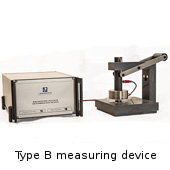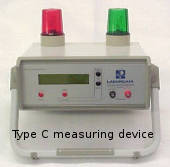|
|
The new electrostatic standard IEC 61340-4-4 for FIBCs
| General High levels of electrostatic charge of FIBCs occur during filling and emptying operations. These electrostatic discharges can pose a severe problem when FIBCs are used in flammable environments. A flammable environment can be generated when handling fine powders that create dust clouds or thin layers of powder, both of which can be ignited by electrostatic discharges. A flammable environment can also be generated when using gases or volatile solvents. IEC 61340-4-4 was introduced by the International Electrotechnical Commission in October last year. The new International Standard describes test methods that can be used by manufacturers, testing institutes and end-users as part of a risk assessment of any FIBC intended for use within a flammable or explosive environment. The standard deals with all types of electrostatic FIBCs (B, C, D). The requirements for type B have been improved with regard to the breakdown voltage (now the limit is 6 kV). The requirements for type C are the same as previously. For type C and type D the smallest and the largest height of each design type has to be tested (family certificate). The main items refer to ignition tests for type D. The ignition test procedure is complicated and expensive. Equipment For performing ignition tests the following equipment is necessary (see diagram):
Recirculating FIBC filling rig A suitable support is used to hold the test FIBCs so that they can be filled with charged product. The test FIBCs are filled with polypropylene pellets. The pellets must be homopolymer without fillers, pigments, antistatic additives, etc. The pellets are fed to a conveyor where they are transported into the test FIBC. The filling rate shall be 1.1 kg/s. It is recommended that pellets be changed regularly. They should be replaced whenever there are obvious signs of contamination, physical degradation, when the level of tribo-charging is significantly reduced, or when there is an obvious build-up of fines. All sections of the test FIBC, including the discharging spout, must be accessible for approach with the ignition probe. Depending on the design of the filling rig and its location, it may be necessary to provide a working platform to support test apparatus and personnel. All metal support framework, working platforms and any other conductors, including personnel, within 1 m of the test FIBC shall be earthed, irrespective of the type of FIBC being tested. Unearthed conductive objects within 1m of an FIBC in operation may become charged by induction or from corona discharging of the FIBC. |
Corona charging unit The polypropylene pellets will naturally become charged by tribo-electricaction, but additional charge shall be injected by the incorporation of high voltage corona points inside the filling pipe. A high-voltage DC power supply is used to control the corona charging system, which shall maintain the average charging current at 3.0 µA. The polarity of charge shall be negative.  Corona charging and ignition set-up acc. IEC 61340-4-4 Gas control and mixing unit The flammable gas is generated by mixing ethylene with air. The volume concentrations of the flammable gas mixture are composed of 5.4 % ethylene and 94.6 % air. Dry gases of at least 99.5 % purity shall be used. The gas control and mixing apparatus is used to direct the gas to the ignition probe. The control of the gas mixture within the specified tolerances shall be checked using an ethylene gas analyser placed in the gas mixture supply line (see drawing). Each gas supply is controlled and monitored using flowmeters and valves. The combined flow rate of the gases through the ignition probe shall be 0.21 litre/s. A fast action shut-off valve is used to stop the flow of ethylene when ignition occurs. The shut-off valve is designed to cut off the supply of ethylene. Ignition probe The ignition probe is a hand-held cylinder, about the size of a fist, made from rigid non-conductive material. On one end of the cylinder a hose is connected to allow the inflow of the flammable gas. On the other end a perforated brass plate is fitted to allow the uniform outflow of the gas. A spherical brass electrode of 20 mm diameter is mounted centrally to the brass plate. The ignition probe is filled with small glass beads. The glass beads assist in the mixing of the gases and also contribute to preventing propagation of any flame back through the probe. A shroud is fitted to the cylinder to direct the gas over the discharge electrode and into the region in front of the discharge electrode where electrostatic discharges take place. A suitable flame arrestor must be installed in the gas supply line as close as possible to the ignition probe. Test climate The test samples and apparatus shall be conditioned under both the following atmospheres: a) (23 ± 2) °C and (20 ± 5) % relative humidity; b) (23 ± 2) °C and (60 ± 10) % relative humidity. The conditioning time shall be at least 12 h prior to testing. When tests are to be conducted the pellets shall be circulated at intervals during this period to ensure adequate conditioning. |
Ignition test Ignition tests are carried out by bringing the ignition probe up to the wall of the charged test FIBC with the flammable gas mixture flowing through the probe. The test sequence is designed to produce at least 200 ignition tests on the test FIBC (50 ignition attempts on each wall). It may be necessary to fill and empty the test FIBC several times in order to complete the required number of ignition attempts. For FIBCs without an outlet, a suitable size cut shall be made in the base. Additional ignition attempts shall be made on any panel attached to the test FIBC (10 on each panel, e.g. labels, flaps, covering spouts). With the discharge spout of the FIBC closed the flow of pellets shall be started and the voltage to the corona charging system shall be applied. When the fill level has started to move up the walls of the FIBC the gas mixture flowing through the ignition probe shall be started. An ignition attempt is made by bringing the ignition probe up to a wall of the FIBC at a point at least 100 mm below the fill level. The speed of approach of the probe shall be (0.75 ± 0.25) m/s. As many attempts as possible shall be made at different points on the wall of the FIBC including edge seams, until the FIBC is three-quarters full. When the FIBC is three-quarters full the inflow of pellets and any corona charging shall be stopped. Then the discharging spout shall be opened and as pellets flow out of the FIBC as many ignition attempts as possible alternating between the wall and the discharging spout and including any seams shall be made. An FIBC intended for use in the presence of flammable vapours or gases, or combustible dusts must not cause any ignition. The test FIBCs shall be considered to fail the requirements if one or more verifiable ignitions occur. Final notes Compliance with the requirements of this standard may not extend to FIBCs that have been contaminated or degraded through use, or are used contrary to manufacturers’ recommendations. Where it is intended that FIBCs be reused for multiple fill/clean/empty cycles, it is recommended that tests be conducted to determine the maximum number of such cycles in order to ensure that end of life performance complies with the requirements. Electrical properties may be affected if an inner bag or liner is used. For the purposes of electrostatic testing, the presence or absence of a liner constitutes a change of type. The new standard has some gaps, e.g. it refers only to FIBCs without liners. It does not include procedures for evaluating the specific risks of electrostatic discharges arising from products within the FIBCs. Committees are working on additional standards referring to these and other unsolved questions. The test methods involve the use of high voltage power supplies and flammable gases that may present hazards if handled incorrectly, particularly by unqualified or inexperienced personnel. LABORDATA offers consultancy and complete equipment for sale for this new technique of type D testing. |
(65)










